“Not all aliens come from space,” it is true. As a result, you should “Save your last breath to scream” In the early and mid-1980s, Hollywood finally had enough of aliens from outer space. In the late 1980s, they finally moved their focus to water. Following a string of extraterrestrial horror sci-fi films such as “Aliens,” “The Thing,” “E.T.,” and others, Hollywood turned its attention to underwater monsters.
Sean Cunningham directed “Deepstar Six” which was released in theaters in January 1989. The film, written by Geof Miller and Lewis Abernathy, began production in 1987, approximately simultaneously with James Cameron’s “The Abyss” and David Webb Peoples and Jeb Stuart’s “Leviathan” (incomplete sentence).
On a 6-month tour of duty beneath the water, 11 crew members of the titular deep sea naval installation were the center of the film. They were thinking about ways to colonize the oceans. Their efforts brought them into contact with a rap offer (I am guessing “wrath of a”) dangerous sea monster, which began attacking them. What happens next to them? Let us see what happens.
The Journey Under The Sea With DeepStar Six: Explored
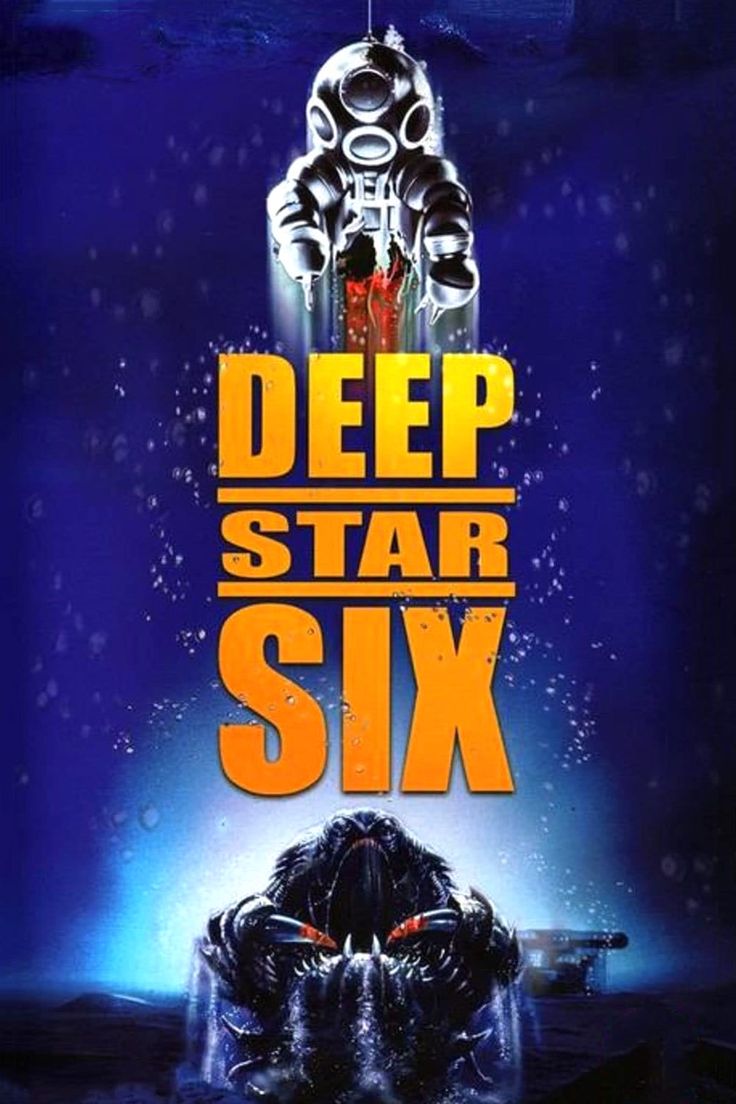
DeepStar Six or DS6 was a U.S. Naval Facility with 11 crew members, who were experimenting on underwater colonization. More importantly, they were trying to install a new nuclear missile platform. The project was headed by Doctor John Van Gelder, who had designed DS6. The remaining crew members consisted of Collins, Dr. Norris, Snyder, McBride, Richardson, Dr. Scarpelli, Dr. Burciaga, Hodges, and Osborne.
They were in their last week of the six months of the experimental project, and the crew was fed up with their underwater life. The movie commenced on a day when McBride and Collins, who were lovers, woke up as their alarm clock went off. They got ready and assembled in a smaller sub called DSRV2 and launched from the SEATRAK, their observation pod. DSRV2, driven by Richardson and McBride, was taken to its second installation, DS6.
There, Snyder and Dr. Gelder had worked overnight to maneuver the missiles sled into position, and the day crew was supposed to begin excavation. Hodges warned the team that before excavation, they should confirm that there were no geological faults. But Collins informed Dr. Gelder about a cavern, and according to the regulations, the missiles sled could not be mounted there. Dr. Gelder ordered Collins to collapse the cavern with explosives and install the missiles by the end of the week.
Scarpelli, the marine biologist, was instantly interested in the cavern as she had reports of unknown marine life in that area that remained unexplored for years. She requested Dr. Gelder to allow her to explore the cavern, but he denied permission. Eventually, Hodges and Osborne were given the charge to deploy the explosives.
The detonation collapsed part of the sea bed and formed a massive fissure in the ocean floor. Osborne and Hodges, who were piloting the submarine, sent an unmanned probe to investigate. Something attacked it and they lost contact. While retrieving the probe, they suddenly detected an extensive SONAR contact approaching very fast. They were attacked and killed by an unknown and unseen force.
Suddenly Collins and Burciaga also detected something huge moving too fast, and before they could comprehend, the monster hit SEATRAK. Collins was severely wounded, and Burciaga was almost dead. Collins had initiated a distress signal which, when detected by DS6, Captain Laidlaw and McBride organized a rescue operation. They somehow managed to dock the tilted pod and rescued Collins but found Burciaga to be dead. But in the rescue process, the unstable hatch door closed in on Laidlaw, injuring him mortally.
Collins and McBride made attempts to rescue him despite their lives being endangered. While Laidlaw pushed the button to flood the compartment, Collins and McBride were compelled to leave him to his fate and return.
Back at the DS6, the crew prepared to evacuate, but they couldn’t just leave the missiles in an unsecured state. Snyder was given the responsibility to follow the procedure to secure the missiles. Without Laidlaw to guide him, Snyder reported “aggression” in the computer as they were being threatened by an aggressive unknown creature.
But the computer interpreted it as an enemy military aggression and advised detonation of the missiles. When Snyder complied with the computer, it resulted in a massive nuclear explosion inflicting electronic and structural damage to DS6. Dr. Gelder informed them that the Oxygen Unit had been destroyed, giving them a time limit of eight hours before they suffocated to death.
But the more significant concern was the reactor that supplied power to DS6. It would explode in a few hours, and they would be unable to use the escape pod as the decompression system had been damaged too.
Collins recommended an alternate method to start the decompression system, and the crew started working on it. Richardson wore a diving suit and tried to repair the damage, but suddenly a scorpion-like monster emerged from the water and bit Richardson into two halves. While the crew panicked, the creature entered DS6 and consumed Scarpelli. The team armed themselves with shotguns and harpoons with explosive cartridges and finally completed the repair work.
The creature soon appeared again and attacked. Dr. Gelder slipped and fell backward on Snyder’s harpoon which exploded, thus killing him. Snyder, extremely panic-stricken, ran back to safety in the Med Lab and started hallucinating Dr. Gelder. Reaching the verge of insanity, he raced into the escape pod and launched, but since he had forgotten to undergo decompression, the change in pressure caused his body to explode.
McBride eventually swam through the flooded area and reached the minisub, which was their only way to escape. While he was gone, the creature burst into the Med Lab, and Dr. Norris tried to electrocute it with the defibrillator. Both Norris and the monster got electrocuted, and while the demon got injured, Dr. Norris was dead.
Collins just managed to escape into the minisub with McBride. As soon as they launched the minisub, the reactor exploded. They reached the surface and deployed the lifeboat, but as soon as they climbed on it, the monster reappeared and struck them.
McBride released the fuel of the minisub and fired a flare destroying the creature as the minisub exploded. Collins was horrified for a while, thinking that McBride didn’t survive the explosion, but he was safe and joined her as they sailed towards the shore.
The creature of the movie is designed with arduous work and indeed sends chills down one’s spine once it appears on the screen. However, the fact is that it appears on the screen quite late, while the first part drags about the characters with their lives and relations.
The appearance of the creature shifted the gear, and the movie accelerated at the desirable pace with requisite action, horror, and thrill. The characters are very well executed, especially Marius Weyers as Dr. Gelder, Greg Evigan as McBride, and Miguel Ferrer as Snyder. The screenplay and execution of the film make it quite attractive and enjoyable though it had been underappreciated by the critics. The film delivers a lot of gory moments and thrilling scenes and is a great watch.
The Horror of the Depladon: Explored
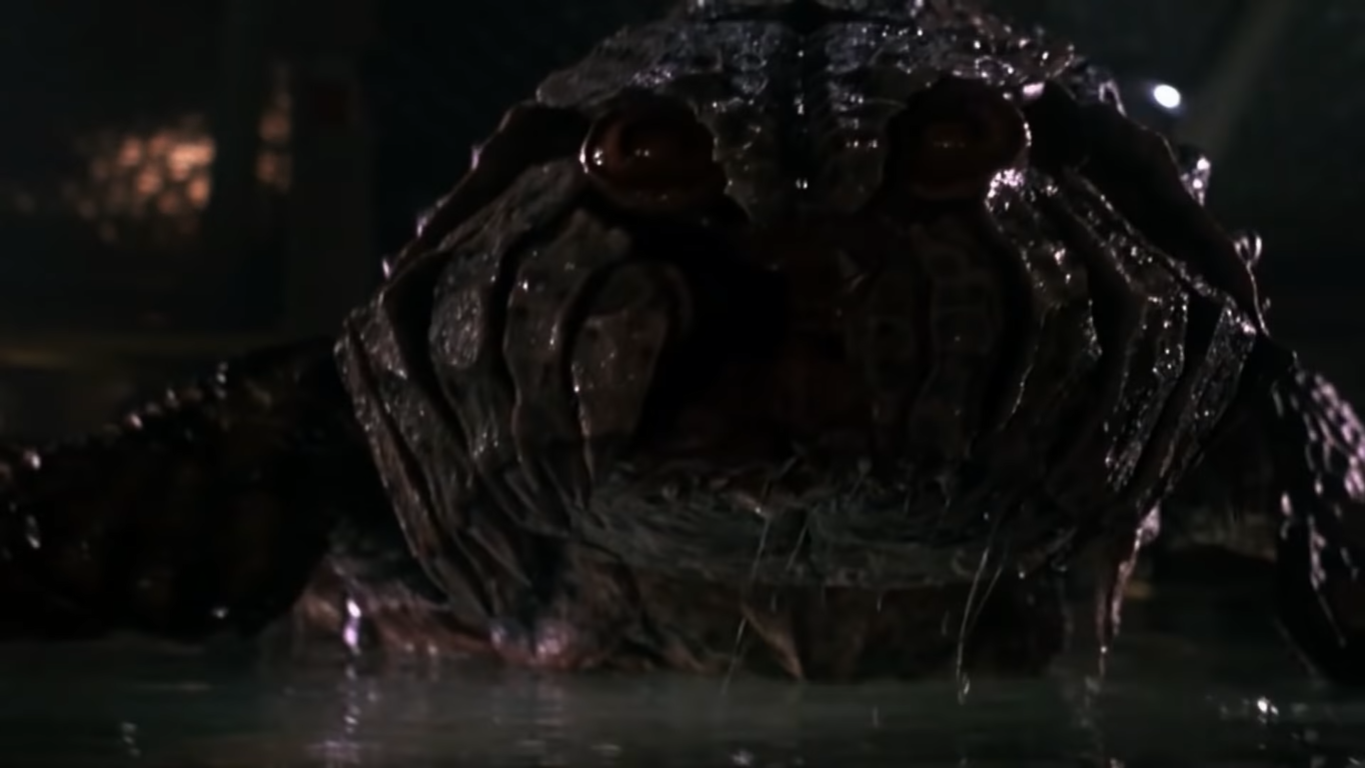
The Depladon was a sea monster creature in the film DeepStar Six that can be traced back to prehistoric Eurypterids. It exhibited the features of arthropods, with a chitinous exoskeleton, segmented body and. Its body was a combination of black and orange color, while its colossal mouth resembled a magnified multi-jawed lobster.
The creature must have existed in an undiscovered, unexplored cavern. It might have been released from its niche by the explosion caused by the sub SEACAT, resulting in a vast fissure on the ocean bed. Consequently, when the SEACAT explored the insides of the cavern, the monster attacked and destroyed it.
As it moved out of the cavern, it was attracted to SEATRAK’s light and hit it very hard. The impact of the enormous monster caused immense damage to the pod, as it wobbled on the cliff. The terror of the Depladon was so heightened that the crew decided to evacuate DS6. However, the unfortunate detonation of the missiles led to massive damage, which needed repair for the evacuation of the crew members.
We get the first glimpse of the Depladon when it rose through the airlock while attacking Richardson, as he tried to repair the damage to DS6. It was almost 9 meters long with sharp teeth and claws and had such a powerful bite that it bit Richardson through the diving suit into two halves with ease. Instantly, it entered DS6 through the airlock, and next, it killed a panic-stricken Scarpelli.
The monster possessed a huge tail which is used to strike its victims and attack them as they fell into the water. While the monster kept on hunting for victims, Dr. Gelder and Snyder both died accidentally. Only three crew members were left.
When it attacked Collins and Norris, Norris tried to electrocute the Depladon with the defibrillator, and it appeared that both of them were dead. Nevertheless, with the tough exoskeleton, the monster was not going to be easy to slaughter. It charged again when McBride and Collins reached the surface safely. Finally, McBride blew up the entire submarine in order to kill the gruesome sea monster.
The giant monster creature of the film was initially designed by Chris Walas but was handed over to Mark Shorstom for creature effects, which made necessary design changes according to requirements. It was a major complicated project to build up a marine mechanical creature as 30 people were engaged to carry out the project.
Many famous specialists like David Kindlon, Everett Burrel, and others were involved in the process. The team created a giant monster rig and a 12-foot-long tail for shooting. Eight people and a stuntman were required to operate the rig. Without the help of CGI, the crew deserves a salute for their effort and for giving us some gnarly moments with the monster to remember.
Comparing DeepStar Six and Leviathan
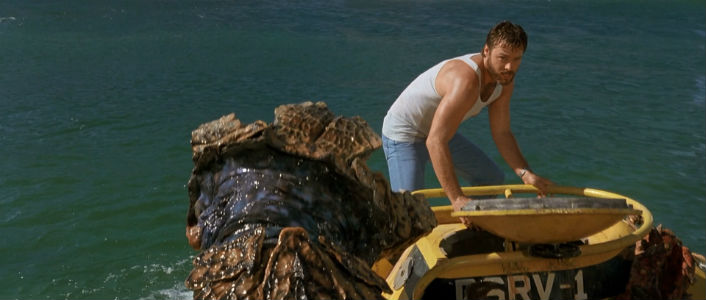
As said earlier, 1989 saw the release of a number of underwater sci-fi horror movies like ‘Deep Star Six, ‘The Abyss’, ‘Leviathan’, and more to follow. It is interesting to know that James Cameron had started his project on ‘The Abyss’ before anyone. Though the aliens of his film were not comparable to the hostile monster of ‘DeepStar Six’ or ‘Leviathan’, I guess his underwater sci-fi content might have been the source of inspiration.
Another interesting point to be noted was that Cunningham had admitted in an interview that he was aware of the production of ‘Leviathan’ and ‘The Abyss’ before he started his own project. But, according to him, he either wanted to beat the other movies, or he would not do the movie at all. ‘Leviathan’ was of a much higher budget than ‘DeepStar Six’, with stars like Peter Weller, Ernie Hudson, Amanda Pays, and many more.
The creature effects were crafted by the legendary Stan Winston and music by Jerry Goldsmith. The creature of ‘DeepStar Six’ might be inspired by the monster of ”The Thing”, released in 1982, and “Alien” released in 1979. However, in both ‘DeepStar Six’ and ‘Leviathan’, you have to wait patiently for the creature to appear, which it does not, before half time has passed.
Winston’s creature evidently produces more horror effects as it muted and converted the person it attacked into monsters, but considering the budget of eight million for ‘DeepStar Six’, Chris Walas did a commendable job. Both films suffered at the box office, but ‘Leviathan’ suffered more than ‘DeepStar Six’ as its budget was higher. It was ‘The Abyss’ by James Cameron which was a massive hit and grossed $89.8 million. So, I guess it really doesn’t matter which film is released first or second as long as it has the quality of a classic movie.
Depladons: Traced Back to the Prehistoric Eurypterids
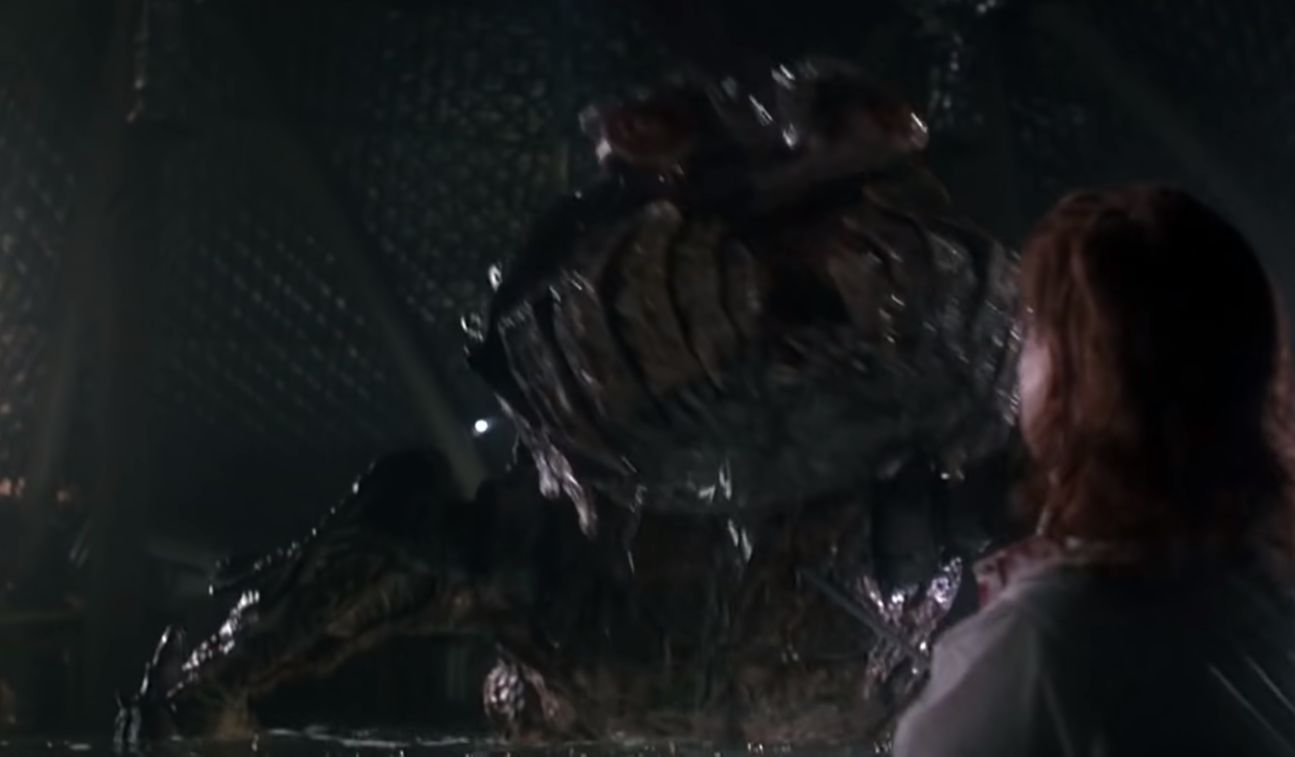
There was a scene in the film ‘DeepStar Six’ when Dr. Scarpelli and Dr. Burciaga were discussing the undiscovered cavern with lots of excitement. They were curious to explore the cavern, which they expected might reveal marine life which has remained unexplored for thousands or millions of years. Well, the sea monster Depladon might be traced back to prehistoric Eurypterids, which were commonly known as sea scorpions.
They are extinct now. So, there is really no way to find out what exactly they looked like, but the Depladon definitely resembled the Eurypterids in many ways. The Eurypterids belonged to the Arthropoda phylum and Chelicerata subphylum while they became extinct approximately 252 million years ago. Surprisingly Eurypterids were the largest known arthropods that might have existed.
Many Eurypterid fossils have been recovered from various sites in North America and Europe, as oceans were their primary habitat. Eurypterids also contained large and well-developed teeth and claws, as was shown in the Depladon, and they were also known to be carnivorous. Though the Depladon is not exactly featured as a Eurypterid yet, nobody knows what evolution can do in millions of years.
Why You Should Watch DeepStar Six
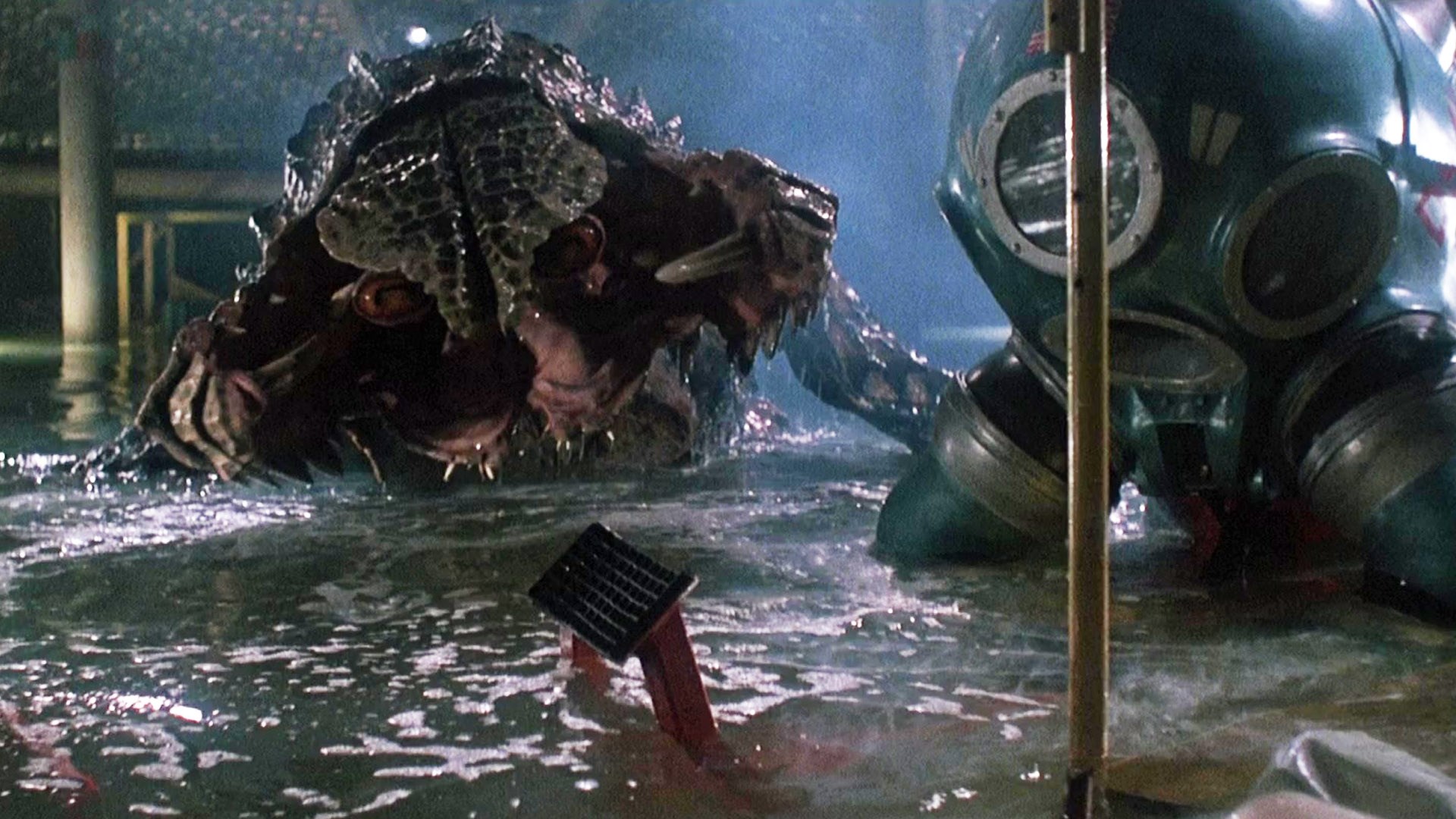
Well, ‘DeepStar Six; may not have famous stars like ‘Leviathan’ or a high budget like ‘The Abyss’, but within its budget, it is an entertaining B-movie that had been executed by Cunningham exceptionally well. It is true that you have to wait for one hour patiently with the suspense of what exactly is attacking the crew.
And even if it shows up, it hardly gives time for scrutiny, but the wait for the monster is worth the watch. The gruesome creature effects without CGI deserve an honor that no one can ignore. So, take a deep breath and dive under the sea and enjoy the film just for pure entertainment, as sometimes that is what we need the most.
